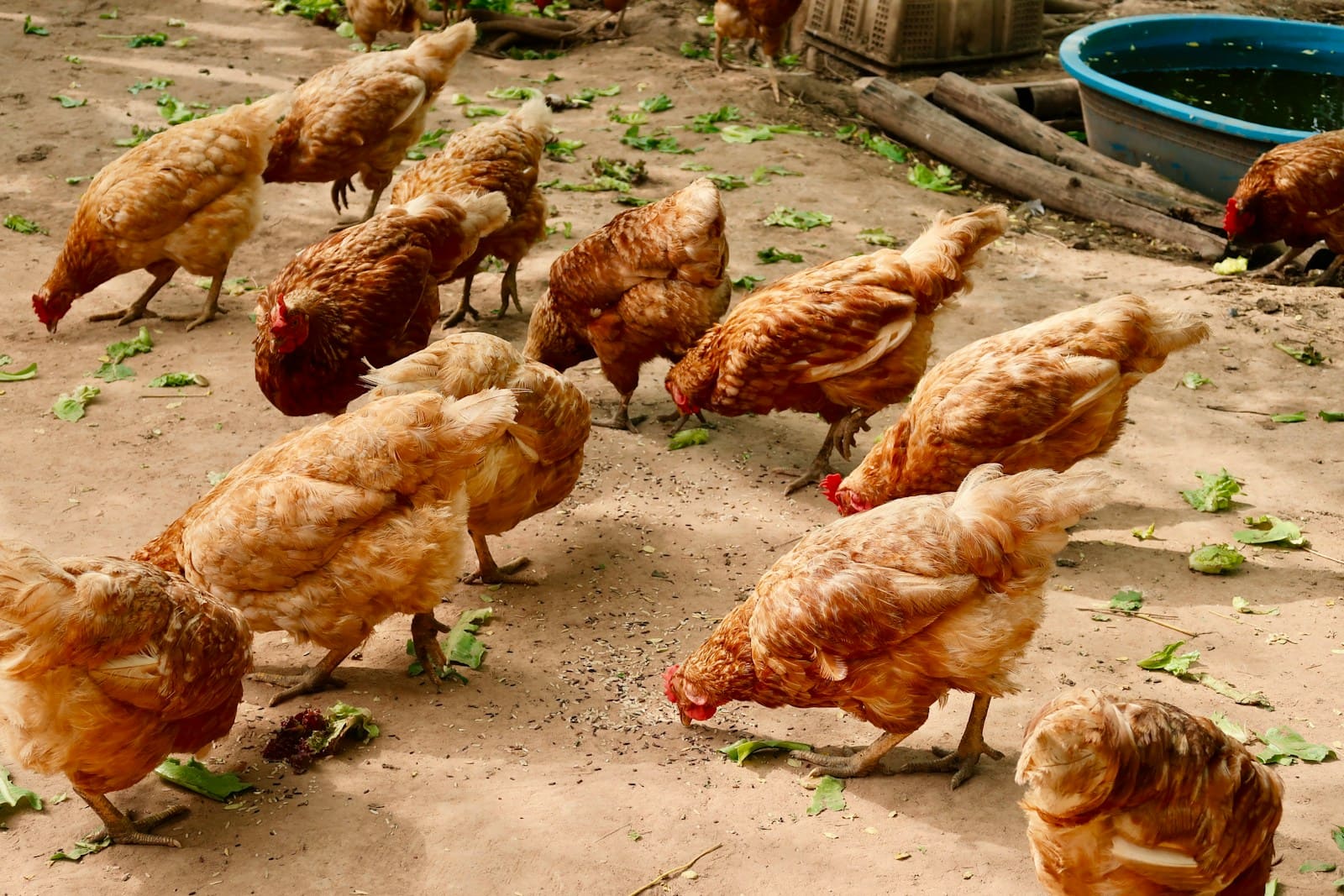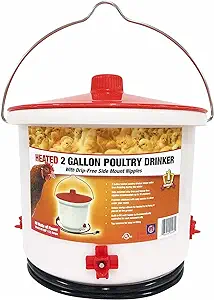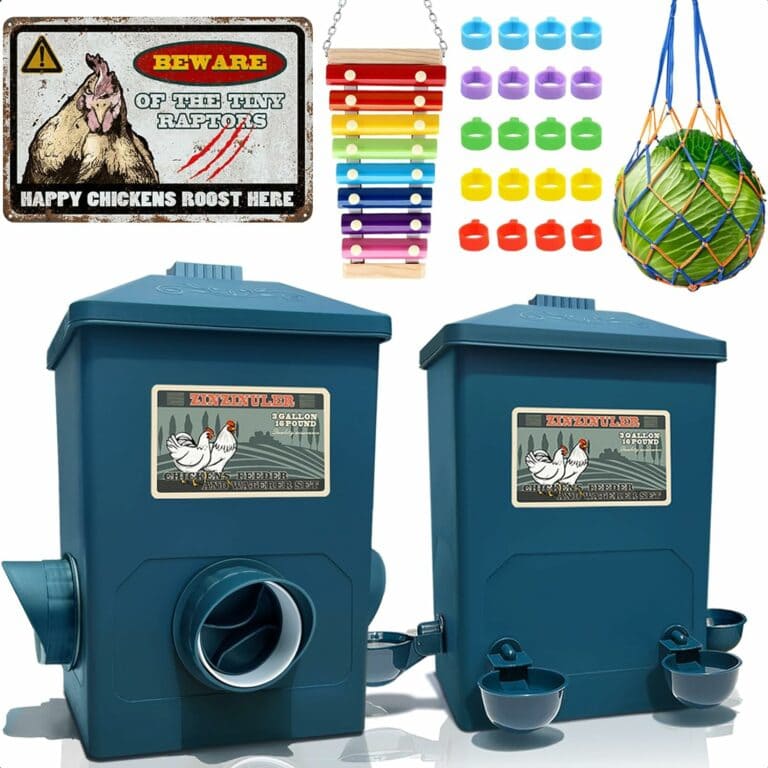Raising chickens in Texas means accounting for the state’s often scorching temperatures and ensuring that the chosen breeds can thrive in the heat. Not all chickens are equal when it comes to weathering the Lone Star State’s climate.
It’s crucial to select breeds that are not only heat-hardy but also maintain a consistent egg production and possess a temperament suited for the environment. Heat-tolerant chickens typically have lighter body weights, larger combs and wattles, and more active personalities, which help them dissipate heat more effectively.
In the search for the perfect poultry to peck around the Texan backyard, one must consider a chicken’s adaptability to high temperatures, its ability to lay a hearty number of eggs, and its overall health in warmer climates.
For instance, breeds like the Leghorn are renowned for high egg production, while the Fayoumi is celebrated for its heat resistance and foraging prowess. Picking the right chickens ensures not only the welfare of the flock but also the productivity of the homestead.
Key Takeaways
- Select heat-hardy chicken breeds to ensure flock well-being in Texas climates.
- Look for breeds with consistent egg production and suitable temperaments for hot weather.
- Consider adaptability, health, and productivity when choosing chickens for Texas heat.
Characteristics of Heat-Tolerant Chicken Breeds
Selecting chicken breeds for the intense Texas heat involves understanding the traits that enable these birds to thrive in high temperatures.
Feather Density and Size
Feather Density: Heat-tolerant chickens tend to have less dense feathering, allowing for better air circulation and cooling. For example, the Naked Neck chicken has about half the number of feathers compared to other breeds, aiding in heat dissipation.
Size of Feathers: Larger feathers can trap heat, so chickens adapted to the heat often have smaller and smoother feathers, which contributes to efficient body temperature regulation.
Body Size and Shape
Body Size: Smaller chicken breeds generally handle heat better as their body mass is less, making it easier to stay cool. The Serama, one of the smallest chicken breeds, is an example of a bird well-suited to warmer climates due to its diminutive size.
Body Shape: Chickens that fare well in heat may exhibit a more slender body shape, enabling quicker heat loss. Breeds with larger combs and wattles also tend to be more heat-tolerant as these features act as radiators to release body heat.
Behavioral Adaptations
Shade-Seeking: Chickens adapted to heat are often observed to be more proactive in seeking shade during the hottest parts of the day to regulate their body temperature.
Dust Bathing: To stay cool and mitigate parasites, heat-tolerant chickens frequently engage in dust bathing. This behavior not only keeps them cool but also ensures their feathers remain in good condition, which is essential for thermoregulation.

Recommendations for Texas Heat
Selecting the right chicken breeds and following appropriate care guidelines are essential for keeping chickens healthy in the challenging Texas climate.
Breed Selection
- Rhode Island Reds: Known for their hardiness in both cold and heat, Rhode Island Reds are exceptional brown-egg layers, with the added benefit of being dual-purpose for eggs and meat. However, they infrequently go broody, which is a consideration if hatching chicks is a goal.
- Australorps: These birds are excellent for Texas, being both docile and prolific layers, producing over 250 brown eggs annually. They are easy to manage, making them suitable family pets.
- Orpingtons: While Orpingtons are affectionate and could be recommended by some, their dense feathering might be a concern in extreme heat.
Raising and Caring Tips
Housing: Ensure adequate ventilation in the coop to help with cooling. Roosts should be well-spaced to prevent overcrowding and overheating.
Water: Provide constant access to fresh and cool water. Adding ice to the water during the hottest parts of the day can help keep chickens cool.
Shade: Create shaded areas in the run, using shade cloth or planting trees, to protect chickens from direct sunlight.
Dust Baths: Offer areas for dust baths, which help chickens regulate their body temperature and keep cool.
Monitoring: Keep a close watch on your flock for signs of heat stress. Symptoms can include panting, lethargy, and a decrease in egg production.
Frequently Asked Questions
Selecting the right chicken breeds for a Texas climate means considering their heat tolerance, egg production, and ability to adapt to extreme temperatures. Here are some specific and commonly asked questions about raising chickens in hot environments.
Which chicken breeds are best suited for the hot climate of Texas?
In Texas, chicken breeds like the Australorp are valued for their docile nature and prolific brown egg production, with some hens laying over 250 eggs a year. They are well-adapted to the Texas heat, making them a suitable choice for local homesteaders.
What are the top heat-tolerant chicken breeds suitable for areas like Arizona and Texas?
Breeds such as Aloha chickens, which are in development specifically for their exceptional heat tolerance, and traditional breeds like the Cubalaya are excellent choices for heat-intense areas like Arizona and Texas.
Which egg-laying chickens perform well in high-temperature environments?
Chickens such as Ancona and Leghorn are standout egg-layers that thrive in hot climates, with Leghorns often producing over 300 eggs per year, making them a top choice for Texas’s high temperatures.
Can chickens thrive in both extreme heat and cold, and if so, which breeds?
The Orpington chicken breed is noted for its versatility, being able to tolerate both cold and heat. This adaptability makes Orpingtons a strong option for regions that experience a wide range of temperature fluctuations.
What breeds of chicken are recommended for raising in hot and humid climates like Florida?
Breeds like the Fayoumi are native to hot climates like Egypt, which makes them an excellent match for hot and humid regions. They are active foragers, though they lay fewer eggs per week compared to some other breeds.
How do you ensure the well-being of chickens during episodes of extreme heat?
Ensuring the well-being of chickens in extreme heat involves providing ample shade, clean and cool water, and proper ventilation. Also, you should minimize stress.
Consistent monitoring for signs of heat stress is also important. Additionally, adapting coop management as needed can help maintain chicken health in high temperatures.




Leave a Comment